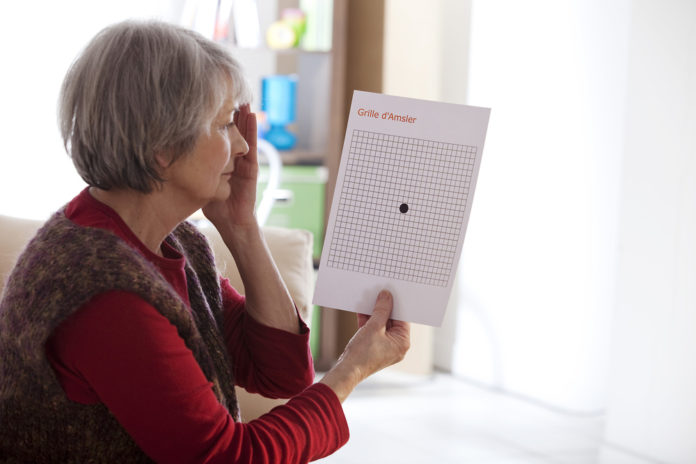What Is Age-Related Macular Degeneration?
According to the National Eye Institute (NEI), age-related macular degeneration (AMD), is “a disease that blurs the sharp, central vision you need for ‘straight ahead’ activities such as reading, sewing, and driving.” AMD is a common eye condition, and causes damage to the macula, or the central portion of the retina. The macular is responsible for focusing vision, controlling the ability to read, driving, seeing objects in fine detail, and recognizing faces and colors.
AMD is the leading cause of vision loss in people aged 50 and older, though if affects individuals at variable paces. In fact, some people with AMD experience a slow progression of vision loss, while others may encounter a faster progression and causes one or both eyes to become compromised.
Risk Factors and Prevention
Along with advancing age, risk factors for developing AMD include:
Smoking
Individuals who smoke double their risk of AMD.
Race
AMD is more common among Caucasians than African-Americans or Hispanics/Latinos.
Family History and Genetics
People in families with a track record of AMD have a greater risk of developing it.
Lifestyle Habits
Lifestyle habits such as smoking, poor diet, and limited exercise increases the likelihood of AMD.
As mentioned, lifestyle habits can impact the risk of developing AMD. Research suggests consuming dark, leafy greens such as kale and spinach lowers the risk of AMD relative to its carotenoid content. Supplementation of vitamins may further protect against it, including the antioxidant-vitamin formula known as “AREDS.” Clinical trials sponsored by the NEI found the mixture of vitamins C and E, zinc, copper, lutein, and zeaxanthin can lessen AMD risk up to 25 percent! Eating more fruits, nuts, and fish; reducing refined carbs; exercising regularly; maintaining a healthy weight; stopping cigarette smoking; avoiding direct sunlight; protecting the eyes with sunglasses; and scheduling routine eye exams are also preventative measures to deter AMD.
How is Age-Related Macular Degeneration Diagnosed and Detected?
Age-related macular degeneration can be difficult to initially detect, as there are no early symptoms in the early and intermediate states. A comprehensive eye exam assists in the discovery of AMD, and may include a visual acuity test, dilated eye exam, Amsler grid or the macular degeneration eye chart, and other pertinent tests. Through the examination, eye care professionals are looking for drusen, or a yellow deposit beneath the retina. While the development of drusen is a normal part of aging, a substantial presence of it can indicate AMD, with pigmentation changes under the retina and the appearance of dark clumps also revealing any concern. The eye exam is also able to diagnose the stage of age-related macular degeneration, including early AMD, intermediate AMD, and late AMD:
Early AMD
Medium-sized drusen is present, though most people do not experience vision loss at this time.
Intermediate AMD
Large drusen is noticeable, along with pigment changes in the retina. Most people still do not experience vision loss at this stage.
Late AMD
Along with observably large drusen, people start to notice changes in vision related to damaged macula. There are also two types of AMD, wet and dry, that are described below.
Treating and Preventing Age-Related Macular Degeneration
Although there is no cure for AMD, treatment regimens and management can lessen the risk of severe vision loss. Treatment options are dependent on the type, including wet and dry AMD:
Dry Age-Related Macular Degeneration
Dry AMD, or geographic atrophy or atrophic type, is a gradual breakdown of light-sensitive cells in the macula. This form of AMD is more common and can be slowed by wearing sunglasses and other preventative measures.
Wet Age-Related Macular Degeneration
Also known as neovascular AMD or exudative type, wet AMD is caused by abnormal blood vessels that grow underneath the retina. The vessels begin to leak blood and a dramatic change in vision tends to follow. Treating wet AMD typically involves injections, though laser therapy and surgery may be treatment options.
Individuals can have both wet and dry AMD in the same eye, with either condition able to appear first. Your doctor can generate a treatment plan to best meet individualized needs, including the common use of anticholinergic drugs, vitamins, laser therapies, vision aids, or surgery. Ultimately, the sooner the diagnosis, the greater the likelihood for effective treatment!






